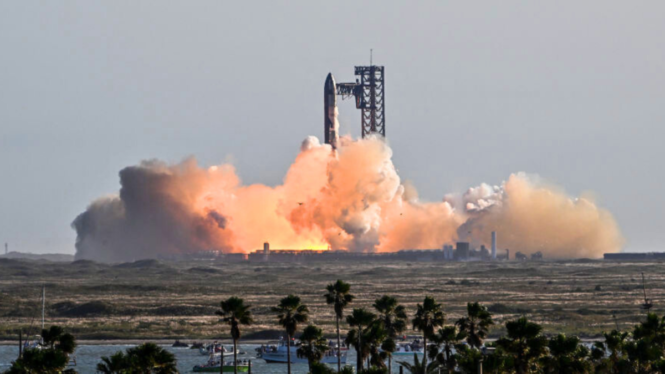
SpaceX conducted its sixth Starship test flight on Tuesday, with CEO Elon Musk joined by U.S. President-elect Donald Trump to observe from the control room. While the launch went well, SpaceX quickly aborted plans to catch the first-stage Super Heavy booster, instead opting for a standard ocean splashdown.
Starship launched from SpaceX’s Starbase launch pad in Brownsville, Texas at 4 p.m. local time (5 p.m. EST / 2 p.m. PST). Building on Starship’s fifth test flight early last month, objectives for this week’s flight included reigniting its Raptor engine while in space, conducting heat shield experiments, and testing manoeuvring changes for reentry.
Arguably the most significant goal of this launch was a second test of SpaceX’s Mechazilla, Starbase’s launch tower. More specifically, this test aimed to use Mechazilla’s “chopstick” arms to catch Starship’s Super Heavy booster rather than have it splash down.
However, SpaceX abandoned its attempt to catch the 33-engine booster mere minutes into the test flight, the Super Heavy booster ultimately splashing down in the Gulf of Mexico instead. SpaceX has not specified exactly why the test was aborted, saying only that the necessary criteria for a catch were not met.
Mechazilla previously caught the booster during its first test of the system in October. SpaceX’s ultimate goal is for the Super Heavy booster as well as the rest of the Starship system to be entirely reusable.
Fortunately for SpaceX, its other objectives went better. As the Super Heavy booster detached, Starship fired its six Raptor engines to take it to a coast phase. It then successfully reignited one of these Raptor engines while in space, doing so for the first time.
SpaceX then pushed Starship’s limits during its final descent, having removed sections of Starship’s heat shield tiles since the last test. Employing a more aggressive angle than typical for reentry, Starship was manoeuvred nose down for the descent rather than its usual “belly flop” orientation. This was intended to deliberately stress the Starship’s flaps, testing whether they were still able to maintain control and help slow the spacecraft down.
Despite the stress, Starship did not undergo a “rapid unscheduled disassembly,” ultimately splashing down intact in the Indian Ocean.
Measuring 397 ft (121 m), SpaceX’s Starship aims to eventually carry passengers beyond Earth’s orbit to “the Moon, Mars, and beyond.” The company claims it will be able to transport 100 passengers on lengthy flights between planets.
https://mashable.com/article/spacex-starship-test-launch-sixth-booster-catch-fail






Leave a Reply